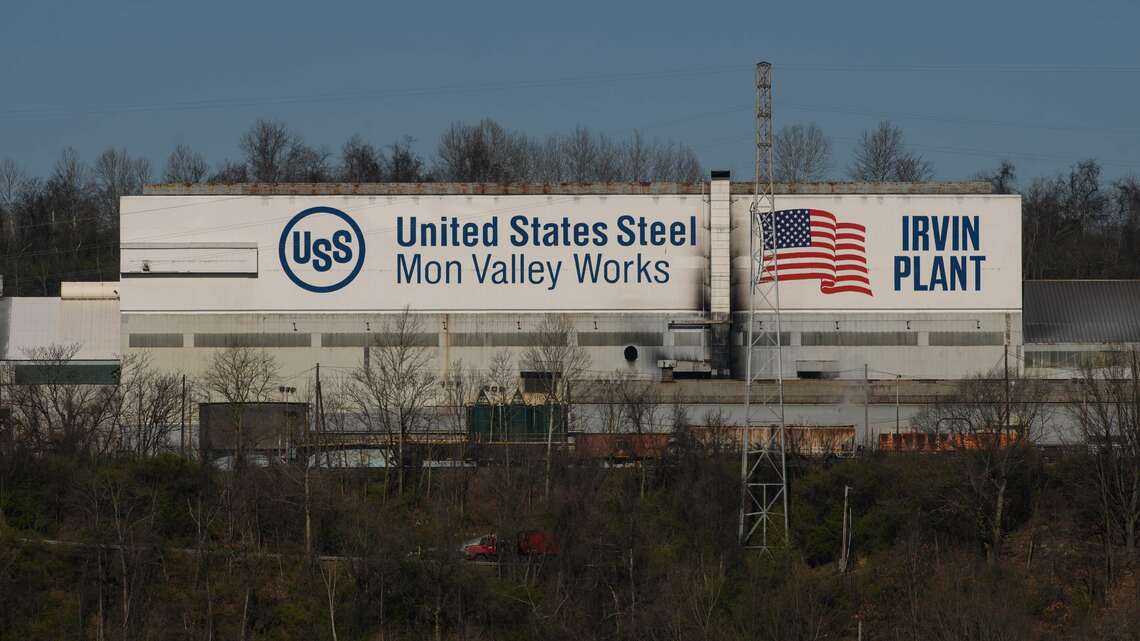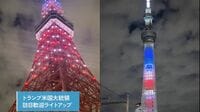
At Nippon Steel’s recent annual meeting, executives minimized the political obstacles to its purchase of US Steel. Executive Vice President Takahiro Mori told anxious shareholders, “Once the US presidential election is over, the political aspect will disappear.”
Another executive discounted both President Joe Biden’s disapproval and Donald Trump’s vow to “absolutely” block it “instantaneously.” Based on wishful thinking that this is just election-year politics in a battleground state (Pennsylvania), this executive declared: “No matter which candidate becomes President, they will probably take a calm view...after the election.”
It is certainly true that the election year gives more leverage to the United Steelworkers Union (USW). Still, this union has inordinate political power even in non-election years and even when its demands hurt the overall economy.
For example, while the US has 140,000 factory workers in steel, it has a million in vehicles and parts. Still, in 2018, Trump raised import tariffs on steel, tariffs that Biden mostly maintained. GM and Ford each said the tariffs would add a billion dollars per year to their costs, hurting their competitiveness and jobs.
It’s also true that Trump is notorious for changing his mind when it will benefit him. So, Nippon Steel recently hired Mike Pompeo, Secretary of State in Trump’s first term, to help it.
Yet, Trump’s economic nationalism is one of the few areas where deep emotions guide him. He proclaimed, “U.S. Steel is being bought by Japan. So terrible.” It’s telling that he chose Senator JD Vance of Ohio, a strident opponent of the merger, as his Vice Presidential nominee. One indicator will be how much Trump and Vance repeat their rhetoric against Nippon Steel in the coming months.
The bottom line is that opposition to the steel merger is not an isolated issue but one of many “canaries on the coal mine” that indicate growing protectionism and nationalism among voters and politicians in both American parties.
The Best Chance for Success: Binding Arbitration With the USW
Nonetheless, there is a chance of the merger going through if Nippon Steel can secure an agreement from the USW and Kamala Harris wins the Presidency. In that case, both the White House and Democratic members of Congress who now oppose the merger would likely change their minds. Up to now, the USW has adamantly opposed the merger.
Worse yet, after one initial meeting in the US with Mori, the union has refused to hold any further talks. However, there’s an opportunity for a possible breakthrough: binding arbitration between the steel companies and the union beginning on August 15.
If the arbitration panel says the deal can go through as long as Nippon Steel provides remedies for the union’s complaints, both sides must comply. The decision could come within a few weeks or so.
There are two issues at stake. Firstly, the USW contends that it was excluded from the bidding process in violation of its contract with US Steel. However, USW had assigned its bidding rights to Cleveland-Cliffs, another American steel company. Nippon Steel outbid that company. If the arbitrator sides with the union and does not propose a remedy, this could jeopardize the acquisition.
Secondly, the USW insists that Nippon Steel guarantee adherence to the existing labor contract. Nippon Steel has promised to do so, but the union contends that assorted “loopholes” make its pledges worthless. For example, Nippon Steel promises no layoffs during the contract's life, which runs until September 2026.
However, a draft of the steelmaker’s proposed agreement says it could abandon that pledge if there is an “unanticipated or significant downturn in business conditions.”
If the arbitrators say the union has valid complaints, then they are expected to specify remedies, and both sides will have to accept that. Then, the merger could go through. Once the union accepted it, the Biden administration’s national security review would also likely approve it.
Why White Working-Class Voters Went Protectionist
Why has this merger become such a canary in the coal mine? It’s because decades of job and income losses have driven many working-class white voters who used to vote for Democrats to flock to anti-globalization populists like Trump. To win these voters back, Biden and many Democrats in Congress have adopted similar stances on trade and even some cases of foreign investment. There is a similar pattern in Europe.
The decline of manufacturing jobs from 20 million in 1979 to 13 million today has wreaked havoc on blue-collar workers and their communities. Consider two white workers born into families at the 25th percentile of household income, one born in 1978 and the other in 1992. At age 27, the first would have a household income of $39,000.
The income of the second would be a stunning $7,000 (18%) less, just $32,000. The biggest factor in this drop is not his education or efforts, but the level of unemployment in his community.
Lifespan and marriage rates suffer the same deterioration. Desperation makes “Make America Great Again” sound attractive even when Trump’s promises of job revival don’t turn into reality.
Nowhere is this trend greater than in the “rust belt” states of the US Midwest, where most unionized factory workers once reliably voted for the Democrats. For example, between 2000 and 2015, auto jobs fell by 30%.
In reality, the leading cause was technology and automation. In 2015, vehicle and parts makers could produce as much with one worker as it took two workers to produce in 2000. Even if the US had imported not a single auto or auto part, jobs would still have fallen 27%. That’s pretty close to the actual 30%. Moreover, employers cut real wages in autos by 10% during this period.
Voters looked for a scapegoat. Throughout the US and Europe, when blue-collar workers who traditionally voted left of center lost jobs to machines, they didn’t want to blame impersonal forces like automation.
Instead, they sought more personal and malevolent culprits, like immigrants and imports boosted by “unfair” practices. In 2016, Trump’s demagoguery massively won the votes of such people. Among white voters without a college degree, Trump beat Hillary Clinton 64% to 28%, surpassing even Ronald Reagan among this group.
Canaries Flock
From 1940 through 2012, not a single Presidential nominee of either party was a protectionist on trade and foreign direct investment. Both political parties believed the lesson of the 1930s Depression and World War II was that open trade made the world more stable and prosperous, and the US more secure.
Hence, the US promoted globalization. How things had changed by 2016, when both Trump and Clinton campaigned against free trade agreements, including the Trans-Pacific Partnership (TPP). Moreover, in the TPP itself, while Washington demanded concessions from other countries it offered few itself.
Since then, things have gotten only worse. It’s not just the Trump and Biden tariffs on allies. Three Biden programs, which together spend $1 trillion on infrastructure, semiconductors, green energy, and so forth, contain stringent “Buy America” requirements that discriminate against allies to a degree not seen in decades.
This is the context in which Nippon Steel is being labeled a “national security threat” when, in reality, the merger would strengthen the US economy. It is sad to say that this is not an election-year exception but a sign of the times.



